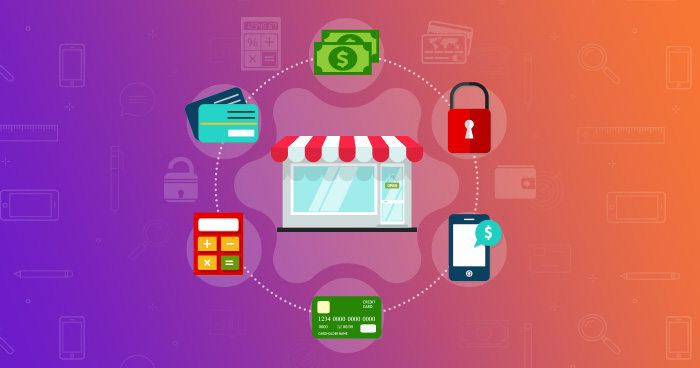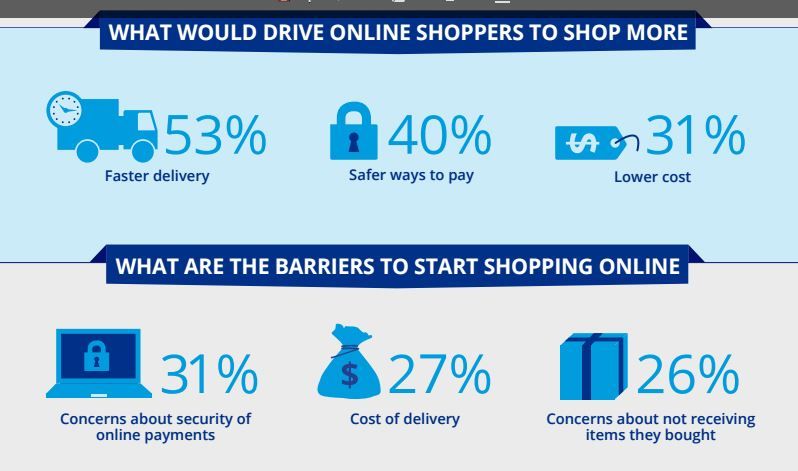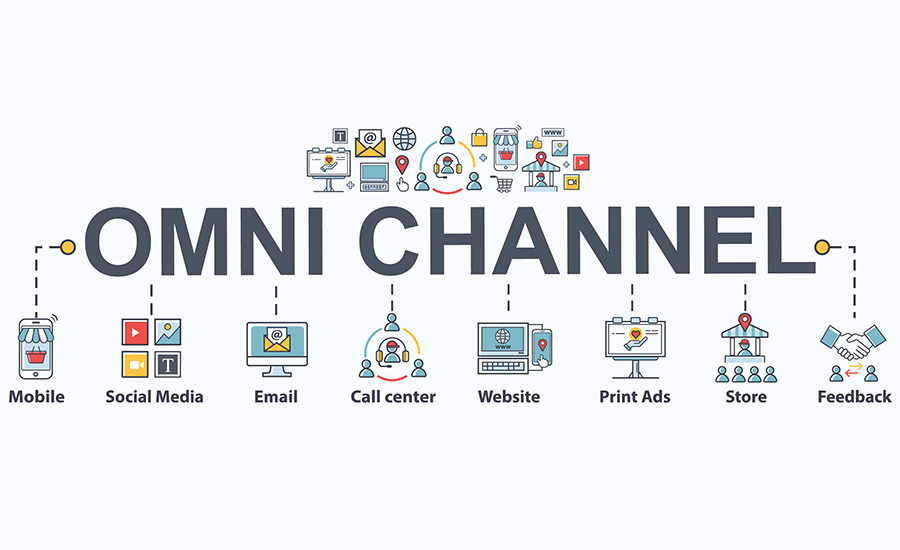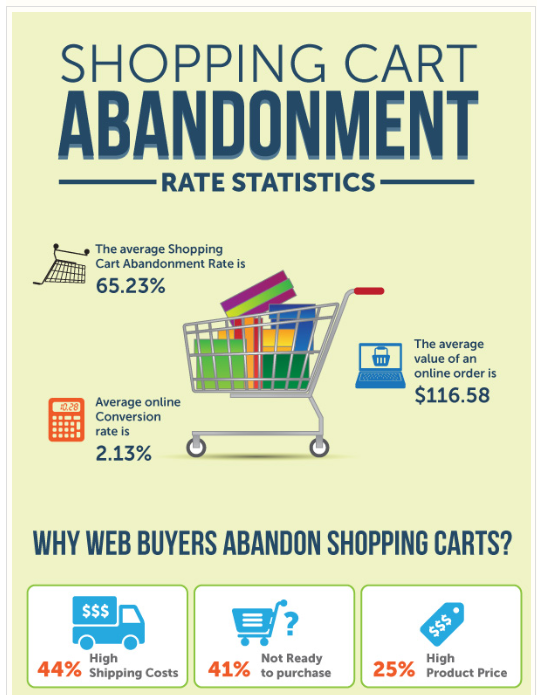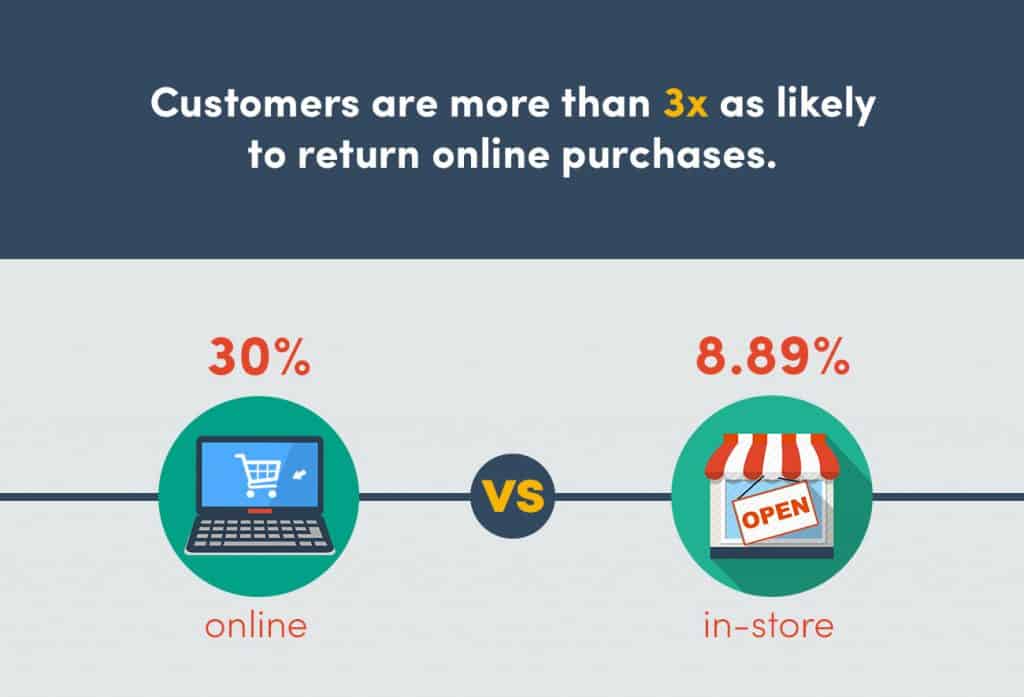Since 2018, retail eCommerce sales in Nigeria have grown every quarter, and all indications are that this trend will continue through 2022 and beyond. Despite this impressive growth rate, there are still a few fundamental challenges facing Nigerian customers from fully embracing e-commerce.
Since the World Health Organization proclaimed Covid-19 a global pandemic, everything from the craving for food in many individuals to the number of fitness channels on YouTube seemed to have increased.
E-Commerce: Silver lining to the 2020 retail sector
While most retail sectors have taken a hit, one of the most intriguing changes that took place in 2020 is the shift to digital. With more people at home, the number of Google searches has multiplied and people have started using e-commerce to buy products they previously would have bought in physical retail stores.
By 2040, it is estimated that 95% of purchases will be made online, so now is the right time for retailers to face eCommerce challenges & find solutions for them. With consumers increasingly relying on online shopping, e-commerce is opening doors of opportunity to many entrepreneurs.
As we all know, there’s no rose without a thorn. In this article, we’ll go over 8 of the most pressing challenges that all e-commerce stores must address in order to find success in 2022.
8 Biggest Ecommerce Challenges in 2021 & Solutions to solve them
Table of Contents
1. Increasing Demand for Data Protection and Cybersecurity
“Security equals credibility & trust”
To achieve success online, you need to build lasting customer trust; therefore, strong data privacy protection & cybersecurity are key factors that determine whether people are willing to purchase items from your website or not. That is why if your web store doesn’t provide optimal security to visitors, no one will take the risk of giving up their personal data to buy your products.
Security issues can lead to nightmare scenarios. Fraudsters may post spam and infect websites with viruses. They can potentially gain access to confidential data about your customers’ phone numbers, card details, and more.
Consumers, though, don’t care what you do, they expect you to protect them fully. Security shouldn’t be seen as part of e-commerce challenges — it should be a bare necessity.
Solution: To make sure your site is safe, here are some ideas:
- Purchase the right SSL certificate from your hosting company, and make sure it’s always up-to-date.
- Use updated protocols such as HTTPS because they’re essential to rank high on search engines, and they also guarantee that your website is secure and trusted by search engines & users.
- Use a CMS that is renowned for data protection and is very trustworthy.
- Improve your servers and admin panels security. In other words, you need to change your web store default password if it can be easily predicted by AI tools. Instead, use complex passwords, and make sure you update them regularly. You can even use security software that warns you when an unknown IP address attempts to access your web store.
- Secure your payment gateway methods to protect your users’ confidential data and ensure a safe transaction experience.
- Use anti-virus and anti-malware software to prevent hackers from hijacking credit card data from your site because they are very handy at spotting suspicious transactions & activities that can threaten your security.
- Use an eCommerce security plugins to empower your web store security against potential attacks and backup your data to prevent data loss.
By implementing these tips, you will have a highly secured website for your business, but make sure you constantly maintain and improve it to achieve a maximum protection for you & your potential buyers.
2. Online Identity Verification
When a visitor goes to an eCommerce website and signs up, you need to somehow be sure that this is a legit person who wants to buy. This way, you’ll avoid fraudulent accounts or bots which could result in revenue losses (especially with cash-on-delivery (COD) purchases).
Your web store is always exposed to potential frauds and malicious bots that can cause revenue & data losses from your site. Therefore, to prevent this, you need to verify that people who try to access your store provide legitimate identity information. This way you will be able to protect yourself against scammers & fraudulent users.
Solution:
- Take proper steps to verify online shoppers’ information. Always send a verification link when a customer signs up.
- With cash-on-delivery purchases, an automated call could even go out to the customer, asking them to validate the delivery address.
- Use automation to identify fake phone numbers and email addresses and of course, lookout for signs of suspicious activity. This could take the form of particularly high value or large orders.
- Use software/plugins such as Captcha to automate spotting fake users and block fake phone numbers, email addresses, and ZIP codes.
3. Delivering an omnichannel customer experience
One of the biggest challenges an online retailer faces is achieving an effective omnichannel strategy.
Omnichannel Customer Experience (CX) means streamlining all the customer interactions across multiple touchpoints in a unified way to deliver a consistent brand experience. 9 out of 10 consumers want an omnichannel experience with seamless service between communication methods.
Customers expect they can reach out to your brand through any number of touchpoints, such as your website, phone, email, social media, your store, and more. All of these touchpoints need to be unified. Any business that isn’t moving toward an omnichannel retailing strategy will likely be left behind.
Solution:
To create an omnichannel strategy that works, think about potential customer needs, and implement the right customer experience technology. Here are a few steps to follow to solve eCommerce challenges of this type.
- Identify key channels first. How are your customers reaching out to you? What channels do they prefer?
- Integrate these channels. Use customer experience technology to talk to customers via their preferred channels (like phone, email, live chat, video call, online help centers or in-app messaging).
- Maintain context. Use interaction history to inform conversations. Unified view features on CX platforms can offer this ability.
4. Outshining Your Competitors
The internet offers everyone an equal platform and hence an equal opportunity. This makes the eCommerce industry extremely competitive, with possibly hundreds of other businesses offering the same products or services to the same target audience.
Even the most niche brands have to fight hard to carve a place for themselves. Every segment in the eCommerce space is set to get increasingly congested and competitive over the years.
Variations in different parameters — costs, service, supply chain operations, and more — can make a huge difference for customers. Getting and maintaining your customer base is one of the most tough-to-crack eCommerce challenges.
For example, if one of your competitors strikes a partnership with a delivery app, this may help them get a greater market share. And that’s even if your prices or products are better.
Solution:
- Conduct thorough research into competitors and the market to develop your digital marketing strategy.
- Invest in promotional offers to help create a better brand presence. Remember that online businesses with customer loyalty programs, on average, are 88% more profitable than those that do not offer these programs.
- Try to create an omnipresent strategy to promote your brand across all channels such as social media outlets, blogs, paid ads, and more. This way you will raise brand awareness and improve customer loyalty.
- Determine which products & services are in high demand; then make them the main items your business offers.
You must optimize your web store usability and enhance UX friendliness. Remember don’t try to outsmart your competitors; just always strive to be different. Also, invest in better customer service.
5. Customer Loyalty
Establishing customers’ loyalty comes down to building trust; however, it’s very challenging to make people trust what you offer with no face-to-face interaction or a closer buyer/seller relationship. Usually, customers might be hesitant to purchase your in-store items, but after a few successful transactions, their trust increases as well as their loyalty.
Here are two facts that show the importance of customer loyalty:
(a) It can cost up to 5 times more to acquire a new customer than retaining an existing one and (b) the success rate of selling to a current customer is 60-70% compared to only 5-20% success rate of selling to a new customer.
This ecommerce challenge can only be solved through time and effort. Across multiple transactions, eventually, the company can build this trust and loyalty.
Solution:
First make sure your customer service processes are effective, from ordering online to shipping. Also, consider:
- Displaying your address, phone number, pictures of staff, customer testimonials, and credibility badges on your website.
- Creating valuable content.
- Enhance your customer service and improve your website cybersecurity.
- Making customer service a priority over profit.
- Asking for customer feedback.
- Refining loyalty programs.
There are many ways to achieve brand loyalty, but the bottom line is that trust & loyalty come with consistent engagement with customers, great customer service, strong cybersecurity, high-quality products, and brand authoritativeness. Keep the continuous work and you shall harvest one time or another.
6. Pricing, Shipping & Order Fulfillment
Despite customer experience being the most important thing for consumers, online merchants frequently compete on price, too. Pricing your products & services without undermining your margin profits can be a complex task.
Price competition particularly affects small ecommerce businesses, as mid-sized and large competitors can often offer products less expensively. We have all heard of customers that prefer to purchase products from places that have free shipping. eCommerce giants like Amazon provide such attractive shipping deals that customers seldom want to look at other places.
Solution: Don’t rely on buyers to pay shipping fees because most of them hate it, and it’s considered one of the main reasons behind cart abandonment. Instead, include the shipping cost with the product price & offer free delivery.
While all eCommerce sites cannot completely get rid of shipping costs, always look to find options that work for your customer base. Would a subscription reduce the cost of shipping? Would a certain time of the month give them lower shipping costs? Or is there a carrier that is reliable but offers a cheaper rate? Be sure to do your research and find the best possible solution for your shoppers.
As an eCommerce business owner, you certainly know that your success is determined by whether people are likely to shop from your store again or not. Here comes order fulfillment at play, for it’s an important player for satisfying and retaining consumers. If you want to achieve effective order fulfillment, focus on having an efficient inventory management strategy and avoid stockouts. Always keep enough items in your stock to meet your target market’s demands. You can solve this by utilizing software to register orders, automate inventory management and avoid stockouts.
7. Managing Cart Abandonment & Increasing Conversions
Cart abandonment is part of every eCommerce business challenges, and most online retailers struggle to solve it. The challenge is in identifying the reason behind it, because there are limitless potential reasons. In other words, the real challenge is to find out why your leads are dropping off without finalizing the transaction process.
To deal with this complex issue, you should first find out why certain shoppers abandon their cart without purchasing items. You can use surveys, analytics, or research your competitors’ sites to gather relevant data. Then based on the collected info, try to identify the potential causes and probe this mystery. After identifying the possible causes, try to formulate solutions and test them and see whether the abandonment rate decreases or not. Accordingly, testing different solutions will help you identify the main cause(s) to avoid high cart abandonment rates.
Still, no matter how much work you put in to avoid this challenge, some people will drop off or leave your site once they purchase an item. It’s like clients who go to a real-world store and ask for all the prices and just leave afterward!
However, to recover shopping carts, you can use two effective strategies. One of which is retaining abandoned cart shoppers through email: In case, your users joined your web store by entering their emails; you can send them emails asking why they didn’t finalize the purchase. It can be in the form of an offer they can’t refuse, a coupon, a discount with a link to lead users back to your site again, or it can simply be an act of showing that you care and you want to know how to make their next visit better!
The second one is decreasing the abandonment rate through retargeting. You can use ads to retarget users who visit and leave your website without entering their emails or purchasing items.
Increasing Conversions:
Improving conversion rates is a haunting issue that most online sellers deal with, and it’s a key indicator to measure your e commerce business success. There are a variety of reasons that lead to low conversions including:
- Poor online presence: if your eCommerce business or store doesn’t live up to your customer’s expectations and deliver a memorably digital experience, they won’t bother to check your products or shop from you. The first impression lasts, so make it unforgettable.
- Not knowing your ideal customers: without having a clear idea about who you’re selling to and what your main target audience is, you will waste a lot of time & resources marketing to the wrong buyers. Eventually, it reduces your conversion rates and lowers your sales.
- Poor SEO optimization: for people to trust in what you offer, you need to rank higher on the SERPs. You need to establish yourself as an authority in your industry and niche; this way you will build brand loyalty and increase conversions.
- Poor written copies: most people don’t know about your products, and they assume they don’t want to. It’s your job to push them to know & make them like your products, but if your copy is badly written, dull and unconvincing, no one will bother reading it! Let alone shopping from your store.
So, to improve your conversion rates & sales, ensure you build a strong & consistent presence for your e commerce business. Identify your target customers, and create effective marketing strategies tailored specifically to their interests & needs. Optimize your site through efficient SEO strategies & engaging content that resonates with your audience. Write compelling & persuasive copies that sell not only your products but also your brand.
8. Dealing with Product Refunds & Returns
Even if you deliver high-quality products, refunds & returns are inevitable problems that you will have to deal with from time to time. A large number of customers check refunds & returns policies before buying an item from you, which means there’s a good chance they will return products if they’re unsatisfied or receive a harmed item (or even if they just didn’t like it really).
The trouble is when shoppers return products, your business endures an overwhelming loss in terms of shipping costs and reputation. However, having clear and straightforward refund & return policies is important for providing and maintaining good customer service. So, you should develop simple & clear policies that don’t overwhelm your business and put off buyers.
Solutions: Here’s how to do it:
- Write clear & straightforward policies that can be easily followed by customers
- Make sure your return policies are easily found on your site’s homepage
- Set your refund method; meaning how are you going to return money to customers
- Set returns conditions to protect your business & products
- Clarify your return period window, which means you need to have a limited time frame in which buyers can return products
Turn These E Commerce Challenges into Opportunities:
It’s crystal clear that dealing with these eCommerce issues can be hard and frustrating, yet if you approach each challenge with a more positive perspective, you will find that with every obstacle you overcome, your business grows. You will learn new ways and encounter opportunities to provide the best service & experience for customers while standing out from competitors. So, never lose heart! Always find smart solutions to deal with problems and try to think of them as fresh opportunities to grow, succeed, and overcome competition in the digital world.
What ecommerce problems is your business facing? What solutions have you tried? Leave a comment.

